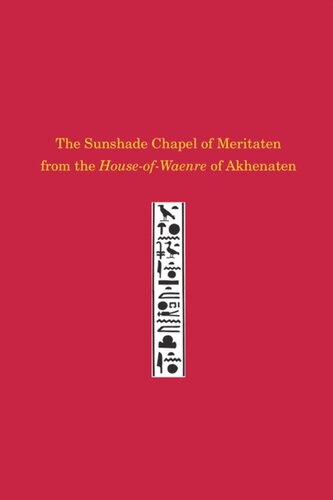

Most ebook files are in PDF format, so you can easily read them using various software such as Foxit Reader or directly on the Google Chrome browser.
Some ebook files are released by publishers in other formats such as .awz, .mobi, .epub, .fb2, etc. You may need to install specific software to read these formats on mobile/PC, such as Calibre.
Please read the tutorial at this link: https://ebookbell.com/faq
We offer FREE conversion to the popular formats you request; however, this may take some time. Therefore, right after payment, please email us, and we will try to provide the service as quickly as possible.
For some exceptional file formats or broken links (if any), please refrain from opening any disputes. Instead, email us first, and we will try to assist within a maximum of 6 hours.
EbookBell Team

4.7
106 reviewsThe quartzite architectural block E16230 has been on display in the Penn Museum for 115 years. E16230 is one of the few large architectural pieces in the world surviving from the much-debated reign of the "heretic" king Akhenaten. This block is one of the most historically significant objects on display in the Egyptian galleries, yet it has never been analyzed or published. This volume addresses that glaring gap and provides for the first time a translation and discussion of the important texts on the object, along with analysis of the architectural evidence it provides.
The block is part of the once intensely ornamented façade of a solar chapel ("sunshade") dedicated to princess Meritaten, the eldest daughter of Akhenaten and Nefertiti. The large (1100 kg) block originates in a chapel that was part of a royal ceremonial palace of Akhenaten named Per-Waenre ("the house of the Unique-one-of-Re"). Later, after demolition of the building, the block was reused in the city of Heliopolis as the base for a sphinx of king Merenptah (Dynasty 19). Subsequently the block underwent a final stage of reuse in Cairo in the Islamic Period where it was found ca. 1898 in the Mousky district of central Cairo. Because the block is such a major architectural element it provides considerable detail in the reconstruction of the essential appearance, decoration, and other aspects of the Meritaten sunshade.
The volume addresses the significance of the piece and the Meritaten sunshade in the context of Akhenaten's monumental program. Major implications emerge from the analysis of E16230 providing further evidence on the royal women during Akhenaten's reign. The book examines two possibilities for the original location of the Per-Waenre in which the Meritaten sunshade stood. It may be part of a large Amarna Period cult precinct at Heliopolis, which may, like the capital city at Tell el-Amarna, have born the wider name Akhet-Aten, "Horizon of the Aten." Alternatively it could derive from Tell el-Amarna itself, possibly belonging to a hitherto unidentified palatial complex at that site. The book is a contribution to the study of one of the most debated eras of ancient Egyptian history focused on this long-ignored treasure of the Penn Museum's Egyptian collection.
University Museum Monograph 144